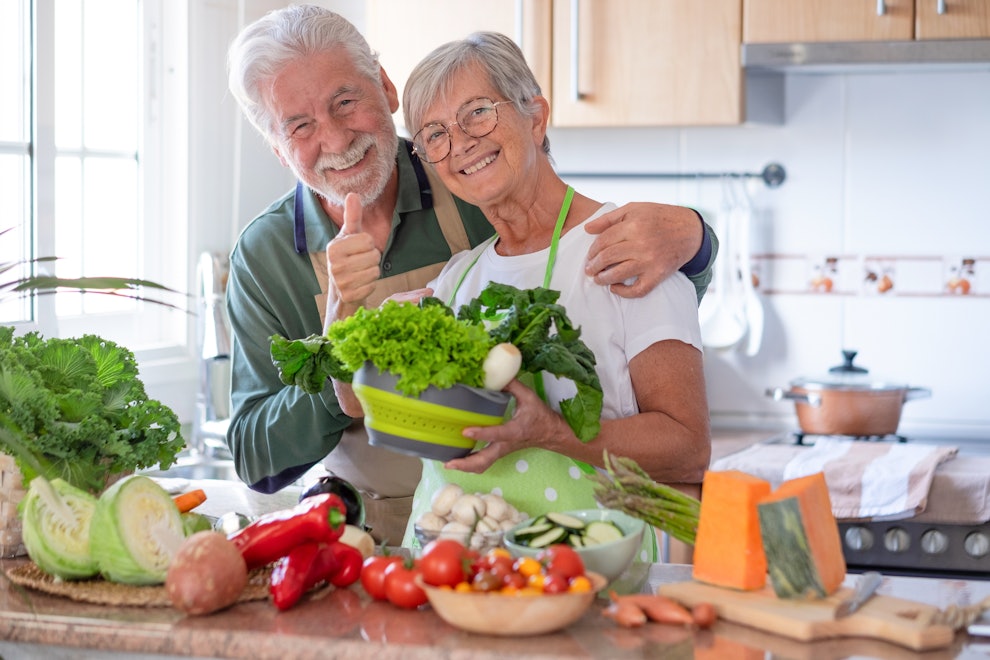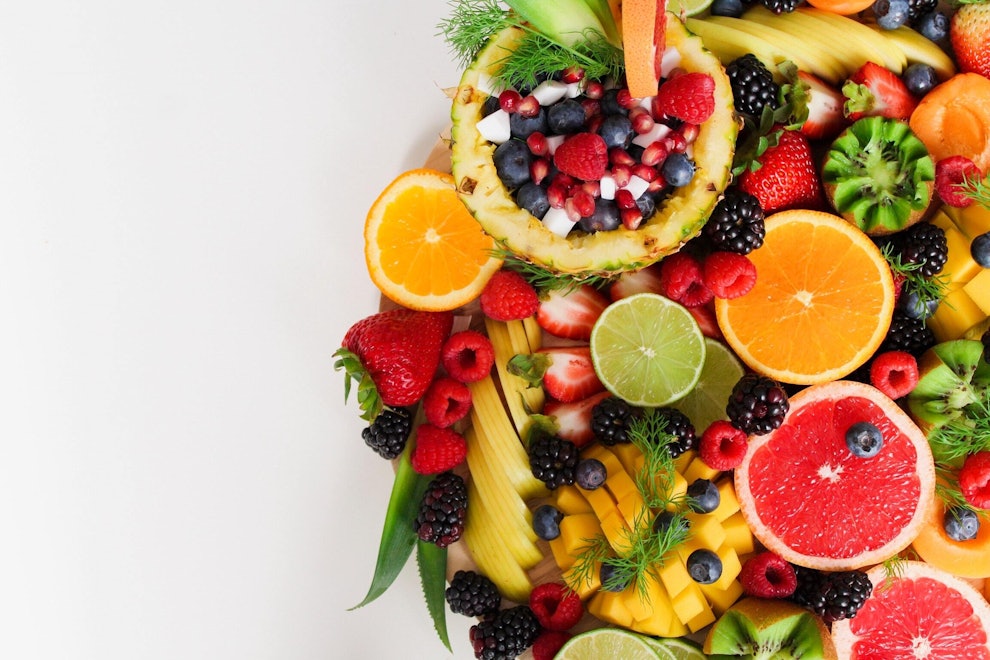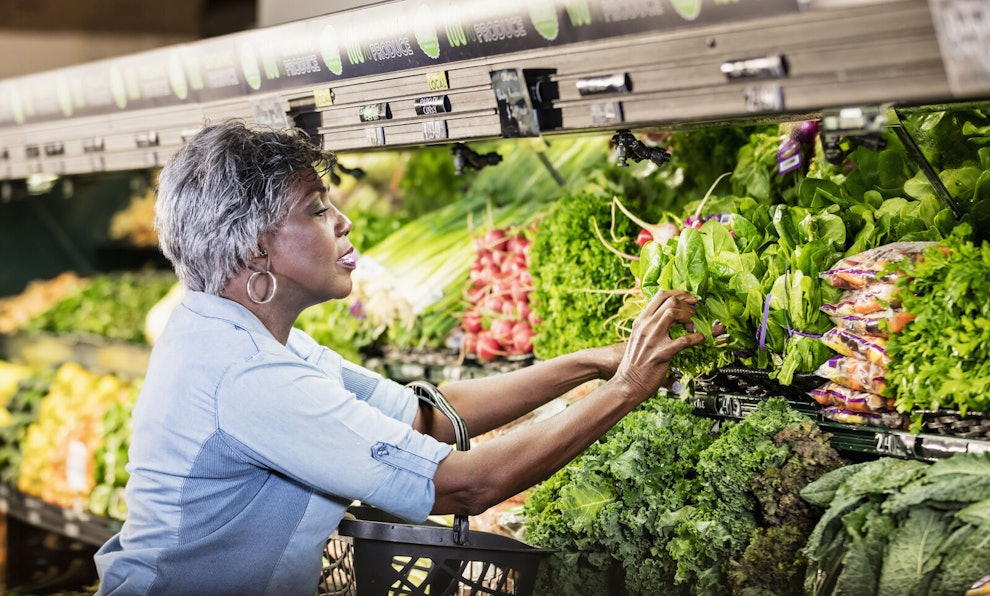Best Recommendations for a Type 2 Diabetes Diet Plan
Article at a glance
Those with type 2 diabetes struggle with insulin resistance, which can have certain impacts on the body, such as blood sugar spikes.
Diet plans are often used to help aid in weight loss, though there can be some questions on what diet plan is best for those with type 2 diabetes.
It’s highly recommended that any diet plan for those with type 2 diabetes is well-rounded, including whole grains, fruits, vegetables, high fiber, healthy, unsaturated fats and proteins, such as lean meats, chicken, turkey, fish, eggs, nuts, beans, lentils, and tofu.

How Can a Healthy Diet Plan Help Manage Type 2 Diabetes?
For those diagnosed with type 2 diabetes, multiple factors should be considered when working to manage the condition. A healthy diet can play a significant role and shouldn’t be underestimated.
The main characterization of type 2 diabetes is insulin resistance—which means the body doesn’t allow insulin to push glucose to cells for energy. This can cause glucose to build up in the bloodstream and cause significant health issues.
To help combat this issue, creating and following a healthy diet can help a person to stabilize their blood sugar levels and maintain a healthy weight, which can help lower symptoms and minimize health issues down the line.

Benefits of a Type 2 Diabetes-Friendly Diet Plan
The main benefits of a type 2 diabetes-friendly diet plan include:
Weight maintenance: making healthier food choices (alongside physical activity) can aid in weight loss or weight maintenance, and in turn, can help regulate your A1C results (the measurement of hemoglobin and glucose levels over the three-month period prior to the measurement).
Control of blood sugar levels: a type 2 diabetes-friendly diet can help lower blood sugar to normal levels, which can help lessen diabetes symptoms, such as tiredness, thirst, frequent urination and blurred vision to name a few.
Lower risk of cardiovascular issues: a healthier diet can additionally help lower the risk of cardiovascular issues such as heart and vascular diseases.

Ideal Components of a Type 2 Diabetes Diet
When formulating the best possible diet options for those with type 2 diabetes, there are a few factors that are necessary to consider.
Whole Foods
Whole foods, especially those that are minimally processed, are an important foundational aspect of an ideal type 2 diabetes diet. Whole foods are more nutrient-dense than other highly processed alternatives and can improve sugar levels (which is important for those with type 2 diabetes to keep their blood sugar level in their target range).
High-Fiber Foods
Implementing foods with higher fiber content is essential for those with type 2 diabetes. Fiber-rich foods are beneficial in helping slow down sugar absorption into the bloodstream, which in turn prevents sugar spikes in the bloodstream. Plus, fiber has the added benefit of making you feel fuller, which allows you to eat smaller portions and feel satisfied and subsequently regulate bowel movements.
Healthy Fats
As it turns out, not all fats are bad for you. Healthy fats, including unsaturated and monosaturated fats, can actually benefit your body. Healthy fats, like vegetable oils (such as olive, canola, sunflower, soy, and corn), nuts, seeds, and fish, alongside high fiber foods can aid in glucose control.
Carbohydrates (in Moderation)
Carbohydrates, such as bread or rice, are important sources of energy for your body, and shouldn’t be eliminated from your diet plan. However, it’s important to manage how much carbs you eat, as they can raise your blood sugar levels.
Balanced Meals
Ensuring you eat meals that are balanced and contain lean protein, vegetables, fruits, complex carbohydrates, healthy fats, and minimal sugar/processed foods help balance your blood sugar and maintain its normal range.

Diet Plans That Are Type 2 Diabetes-Friendly
There isn’t one set “diabetes” diet plan, but there are a few options that are typically considered type 2 diabetes-friendly, including:
Mediterranean Diet
The Mediterranean diet is considered a great choice for those with type 2 diabetes due to its focus on plant-based eating with the inclusion of poultry, and seafood. While nothing is fully restricted in this approach, the plan encourages a person to reduce the consumption of red meat, dairy, and sugary foods.
According to the CDC, this diet is often linked to better heart health, reduced risk of developing type 2 diabetes, or better management of diabetes.
Note: To learn more about the Mediterranean Diet, visit this source.
Vegetarian or Vegan
A vegetarian or vegan diet is another diet plan that can work well with type 2 diabetes, depending on the specific food choices made. Vegetarians do not consume any meat but may consume eggs, dairy, or other animal byproducts. Vegans do not consume any animals or animal byproducts, including dairy, eggs, or honey. While restricting certain foods requires a more focused intention of eating a balanced diet, both options still have plenty of food choices that allow you to still maintain proper nutrition.
Eating a vegetarian or vegan diet can potentially lower high blood pressure and can help stabilize blood sugar and maintain blood sugar control.
Note: To learn more about the Vegetarian or Vegan Diet, visit this source.
DASH
The DASH (Dietary Approaches to Stop Hypertension) diet is ideal for those with type 2 diabetes, especially with its focus on whole grains, fruits, vegetables, lean meats such as poultry, and fat-free or low-fat dairy, as well as encouragement to eliminate processed foods and sugary foods/drinks and limiting red meat.
While this diet is most associated with lowering the risk of high blood pressure (hypertension) and heart disease, it’s also known to lower blood sugar.
Note: To learn more about the DASH Diet, visit this source.
Paleo
A paleo diet can potentially be beneficial to those with type 2 diabetes, depending on the food choices. Paleo diets encourage people to focus on foods such as cuts of pork, beef, poultry, and low-sodium versions of bacon, as well as non-starchy vegetables, game animals, eggs, shellfish, fruit, oils, nuts, and seeds. The plan also encourages eliminating processed foods, grains, dairy products, and legumes.
While several of the permissible foods in a paleo diet can benefit those with type 2 diabetes (most notably by cutting out processed foods), it’s important to note that there is also a higher likelihood of eating saturated fats, which can lead to cardiovascular issues if consumed too much over time.
Note: To learn more about the Paleo Diet, visit this source.
Low-Carb
Over the years, there has been some confusion regarding whether low-carb diets provide benefits to those with type 2 diabetes. The plan focuses on limiting carbs (such as grains and starchy vegetables) and focusing on protein and fats. It’s most commonly linked to weight loss, but given those with type 2 diabetes experience blood sugar spikes from consuming too many carbohydrates, it makes sense to consider it.
A study from 2021 discussed the possibility of a low-carb diet helping bring type 2 diabetes into remission with success, though it concluded the results seemed to plateau after a year due to the restrictiveness of the plan.
Note: To learn more about Low-carb diets, visit this source.

Best Foods to Eat
Eating healthy foods within a well-balanced diet is ideal for any diet plan. However, some foods may be more suitable for those with type 2 diabetes.
Whole Grains
Whole grains are a great staple for a diabetes diet plan, especially since certain carbs can cause blood sugar levels to rise. Some examples of whole grains to consider include:
Brown rice
Quinoa
Bulgar
Farro
Buckwheat
Oats
Barley
Whole grain bread
Whole grain pasta
Non-Starchy Vegetables
Non-starchy vegetables provide a host of nutrients and vitamins that can help regulate your digestive systems and ensure you’re getting proper nutrition. Some examples of non-starchy vegetables include:
Brussels sprouts
Broccoli
Cauliflower
Artichoke
Asparagus
Beans
Bean sprouts
Beets
Celery
Cucumber
Eggplant
Greens (collard, kale, mustard, turnip)
Hearts of palm
Cabbage (green, bok choy, Chinese)
Carrots
Baby corn
Bamboo shoots
Jicama
Leeks
Mushrooms
Squash (cushaw, summer, crookneck, spaghetti, zucchini)
Sugar snap peas
Swiss chard
Okra
Onions
Salad greens
Sprouts
Tomato
Turnips
Pea pods
Peppers
Radishes
Rutabaga
Starchy Vegetables
Starchy vegetables have plenty of antioxidants, vitamins, and minerals necessary for a healthy diet, but should be eaten in moderation to avoid unnecessarily raising your glucose levels. Some examples of starchy vegetables include:
Corn
White potatoes
Sweet potatoes
Green peas
Acorn squash
Butternut squash
Turnips
Carrots
Low-Fat Dairy Products
Low-fat dairy products can be beneficial, as they typically have lower amounts of saturated fat. Additionally, they still have high levels of calcium, which can contribute to healthy blood pressure. Some examples include:
Greek yogurt
String cheese
Low-fat/fat-free milk
Calcium-fortified plant-based milk

Foods to Avoid
There are certain foods that may not be compatible with a type 2 diabetes diet plan and should be limited or avoided if possible.
High-Sodium Foods
Foods that contain higher levels of sodium can result in high blood pressure and affect blood sugar levels, making them less than ideal. Some examples of high-sodium foods include:
Processed/microwaveable meals
Canned soups
Salted meats
Cheese
Stock cubes and powdered instant gravy/broth mixes
Condiments such as ketchup, soy sauce, and mayo
Saturated Fats
While some forms of fat are beneficial, foods with high amounts of saturated fat should be avoided as much as possible for those with type 2 diabetes. Some examples of foods with saturated fat include:
Bacon
Sausage
Cured meats, such as salami and chorizo
Butter, lard, ghee
Cheese
Ice cream
Milkshakes
Coconut milk and cream

Beverages
In addition to food choices, there are beverages to keep in mind that can either benefit or deter your efforts to lose weight and manage your diabetes.
Beverages to Choose
Water
Vegetable juice
Homemade iced teas
Beverages to Avoid
Fruit juices loaded with sugar
Sugary drinks such as soda
Alcoholic beverages
Sports/energy drinks
Coffee or prepared teas in large amounts
Tips for Starting
If you’re starting a type 2 diabetes diet with a focus on healthy eating, there are a few tips that can help you towards your goals.
Meal Planning
While the idea of meal prep and planning meals can feel overwhelming to some, it can help keep you consistent throughout each week. Creating a meal plan can help ensure you include all the food groups, you can portion each serving to help consume fewer calories, and ensure food doesn’t go to waste.
Note: If you’re struggling to start, the American Diabetes Association (ADA) has online recipes and sample menu ideas that can help you start the process.
Nutrition Therapy
Medical nutrition therapy (MNT) is defined by the Centers for Disease Control and Prevention (CDC) as “a key component of diabetes education and management.” MNT is delivered through a registered nutritionist/dietician and can help manage diabetes via diagnosis and counseling services.
MNT services can help you create diet plans that not only manage your diabetes but target other goals, such as weight loss and regulating blood pressure and blood sugar levels.

Which Diets Should Be Avoided?
While some diet plans can work well (or be easily adapted) for those with type 2 diabetes, there are a few that should either be avoided or considered with caution.
Intermittent Fasting
Intermittent fasting involves a consistent routine of fasting and eating, most notably to lose weight quickly. There has been mixed messaging on whether these plans can be beneficial to those with type 2 diabetes. Some potential has been shown to help increase insulin sensitivity with intermittent fasting, yet there is also a potential risk if those taking certain diabetic medicines that require food absorption attempt the plan, as the medicines won’t be as effective.
It’s also worth noting that if intermittent fasting isn’t done following proper nutrition guidelines, it can have negative health consequences.
OTC Diet Pills (not FDA-approved)
While diet pills may be used by some to aid in weight loss, it’s highly recommended to avoid OTC diet pills that aren’t regulated by the Federal Drug Administration (FDA). These pills may contain ingredients that could affect blood sugar in a negative way.
It’s important not to take diet pills or other unregulated supplements without talking to your healthcare provider first. Your provider may be able to recommend FDA-approved alternatives that can help with your goals.
FAQ
What are the basic recommendations for a diabetes diet?
It’s recommended that any diabetes-friendly diet include balanced portions of fruits, veggies, proteins (such as lean meats, soy, lentils, etc.), whole grains, healthy fats and non-fat or low-fat dairy.
What are some food items a diabetic should limit or stay away from?
It’s recommended that those with type 2 diabetes limit or exclude saturated/trans fats, alcoholic beverages, and sugar-heavy drinks, as well as overwhelming amounts of carbohydrates and refined sugar.
What foods can help lower A1C levels?
Some foods that can help lower A1C levels include whole wheat bread, fruits, nuts, legumes, and fatty fish.
How many carbs should a type 2 diabetes eat daily?
While the exact number varies per person, the CDC recommends that a person should get approximately 45% of their total calories each day from carbohydrates.
Sources
- https://www.cdc.gov/diabetes/managing/eat-well/meal-plan-method.html
- https://www.everydayhealth.com/type-2-diabetes/guide/diet/
- https://www.healthline.com/health/type-2-diabetes/best-meal-plans
- https://diabetes.org/healthy-living/recipes-nutrition/meal-planning
- https://medlineplus.gov/ency/article/007429.htm
- https://health.clevelandclinic.org/the-best-and-worst-diets-if-you-have-diabetes/
- https://diabetesjournals.org/care/article/42/5/731/40480/Nutrition-Therapy-for-Adults-With-Diabetes-or
- https://www.niddk.nih.gov/health-information/diabetes/overview/diet-eating-physical-activity
- https://www.nature.com/articles/nature13793
- https://www.diabetes.org.uk/guide-to-diabetes/enjoy-food/eating-with-diabetes/food-groups/salt-and-diabetes-
- https://www.ncbi.nlm.nih.gov/pmc/articles/PMC7352826/
- https://www.bmj.com/content/372/bmj.m4743
- https://www.cdc.gov/diabetes/dsmes-toolkit/reimbursement/medical-nutrition-therapy.html
- https://www.hsph.harvard.edu/nutritionsource/what-should-you-eat/fats-and-cholesterol
- https://medlineplus.gov/diabeticdiet.html
Type 2 Diabetes Diet Plan: Eat This, Not That
What foods to eat and avoid while dieting for type 2 diabetes.




